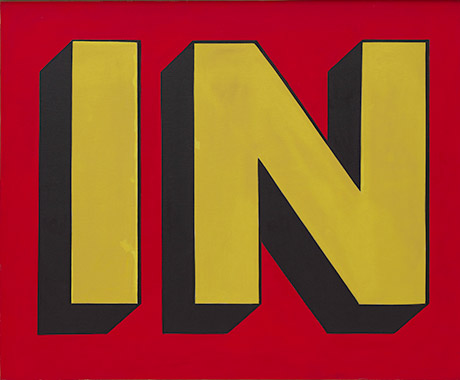In , 1962
GALLERY 205
The 1960s were some of the most turbulent years of the twentieth century, culturally and politically. The United States had become an industrialized society poised on the brink of the information age. The remarkable economic growth that occurred from the end of World War II through the Cold War era of the 1950s resulted in a newly invigorated consumer culture in America. A number of the artists who burst onto the scene, particularly in New York and Los Angeles in the early years of the decade, responded to this new commercialism. Pop art is often considered an essentially American phenomenon, but British artists and theorists first debated and formulated its main tenets in the late 1950s. The term pop, which spread to music and fashion, corresponded to a broader way of life among young people in the 1960s that became a significant sociological phenomenon and altered the course of the century.
In Pop art, the everyday replaces the epic and the mass-produced is awarded the same significance as the unique, effectively eroding the gulf between “high art” and “low art.” Cool, detached, mechanical illustrations of common objects, often appropriated from advertisements, and other images drawn from pulp and celebrity magazines, billboards, movies, television, comic strips, and consumer product packaging populate the work of Roy Lichtenstein, James Rosenquist, and Andy Warhol, among others. This imagery, presented with (and sometimes transformed by) humor, wit, and irony, can be seen as both a celebration and a critique of popular culture.

